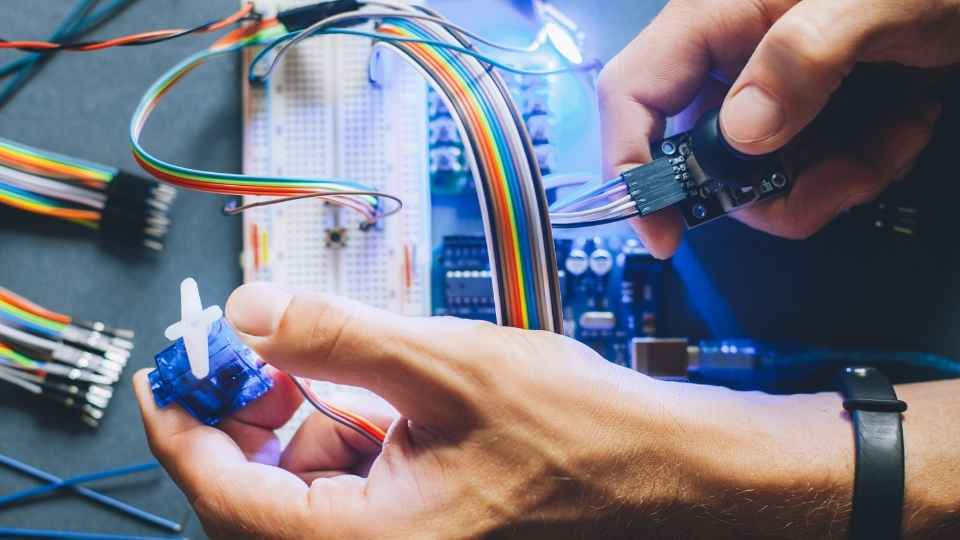
In the realm of microcontrollers, one name reigns supreme - Arduino. Renowned for its versatility and user-friendly nature, the Arduino Microcontroller has become the go-to choice for makers worldwide.
With a rich history rooted in open-source development, this powerful device empowers individuals to bring their wildest ideas to life.
From its key features to its countless advantages and applications, the Arduino Microcontroller continues to revolutionize the maker community.
Join us as we delve into what sets this remarkable device apart from its competitors and explore the limitless possibilities it holds for future innovations.
Key Takeaways
- Arduino Microcontroller was developed in 2005 as an open-source platform for DIY electronics projects.
- It offers versatile input/output options, expandability with shields, and a user-friendly programming interface.
- Shields are additional hardware modules that enhance and extend functionality, making customization accessible to users without extensive knowledge of electronics.
- Arduino Microcontroller has a strong community support system, affordable price point, and a wide range of applications in various industries.
History of Arduino Microcontroller
The history of the Arduino microcontroller dates back to 2005 when it was first developed as an open-source platform for DIY electronics projects. It was created by a group of students at the Interaction Design Institute Ivrea in Italy, with the aim of providing an affordable and accessible tool for anyone interested in creating their own electronic devices.
The Arduino board quickly gained popularity among makers and hobbyists due to its simplicity, flexibility, and versatility. Its open-source nature allowed users to freely modify and share their designs, leading to a vibrant community that continues to contribute new ideas and improvements.
This freedom has made Arduino a favorite choice for those who value creative exploration and innovation in the world of electronics.
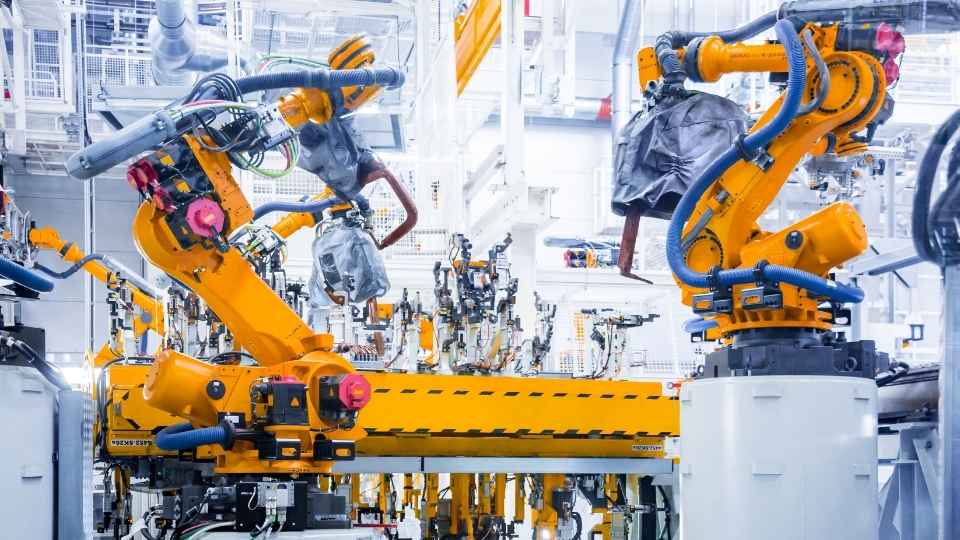
Key Features of Arduino Microcontroller
The Arduino microcontroller boasts several key features that make it a popular choice among makers and electronics enthusiasts.
Firstly, it offers versatile input/output options, allowing users to connect various sensors, actuators, and other devices to create interactive projects.
Additionally, the Arduino is expandable with shields, which are add-on boards that provide additional functionality.
Lastly, its user-friendly programming interface makes it accessible even for beginners in the world of coding and electronics.
With its extensive range of input/output options, the Arduino microcontroller offers unparalleled versatility for makers. Here are three reasons why its input/output capabilities make it a popular choice among freedom-seeking creators:
Digital I/O Pins: The Arduino comes equipped with a generous number of digital I/O pins that allow users to connect and control various sensors, actuators, and other devices.
Analog Inputs: In addition to digital inputs/outputs, the Arduino also features analog inputs which enable precise measurement of voltage levels from sensors or other analog sources.

PWM Outputs: Pulse Width Modulation (PWM) outputs on the Arduino allow for controlling devices that require variable power levels, such as motors or LEDs.
These versatile input/output options empower makers to create a wide range of projects with different requirements and functionalities.
Furthermore, the expandability of the Arduino's capabilities can be further enhanced with additional hardware modules known as shields - which will be discussed in detail in the next section.
Expandable With Shields
Expanding the capabilities of the Arduino is possible through the use of shields, additional hardware modules that enhance and extend its functionality. These shields connect to the Arduino's pins, providing extra features such as WiFi connectivity, GPS tracking, or motor control.
The beauty of these shields lies in their plug-and-play nature, making it easy for users to customize their Arduino projects without extensive knowledge of electronics. There are a wide variety of shields available on the market, catering to different needs and preferences.
From prototyping boards to sensor modules and communication interfaces, there is a shield for almost any project requirement. This expandability enables freedom for makers to explore new applications and push the boundaries of what can be achieved with an Arduino microcontroller.
User-Friendly Programming Interface
A user-friendly programming interface simplifies the process of coding for the Arduino, allowing users to quickly and easily create and modify their projects. This feature is highly valued by the audience that desires freedom in their creative endeavors.
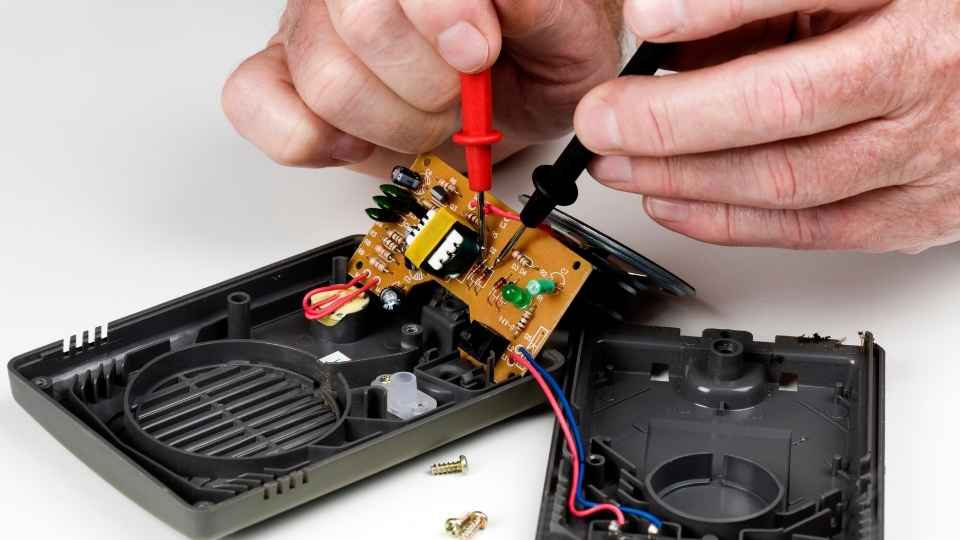
Here are three reasons why a user-friendly programming interface makes the Arduino an ideal choice for makers:
Intuitive IDE: The Arduino Integrated Development Environment (IDE) provides a simple and intuitive platform for writing code. It offers features like syntax highlighting, auto-completion, and error checking, making it easier for beginners to get started.
Extensive Libraries: The Arduino community has developed a vast collection of libraries that simplify complex tasks. These libraries provide pre-written code for various functions, enabling users to save time and effort in implementing common functionalities.
Interactive Debugging: The Arduino IDE enables users to debug their code interactively through serial communication with the microcontroller board. This feature allows makers to identify and resolve issues quickly, ensuring smooth operation of their projects.
With its user-friendly programming interface, the Arduino empowers individuals to turn their ideas into reality with ease and flexibility.
Advantages of Using Arduino Microcontroller
The Arduino microcontroller offers several advantages that make it a popular choice among makers and developers.
Firstly, the easy prototyping process allows users to quickly test and iterate their ideas without extensive programming knowledge.
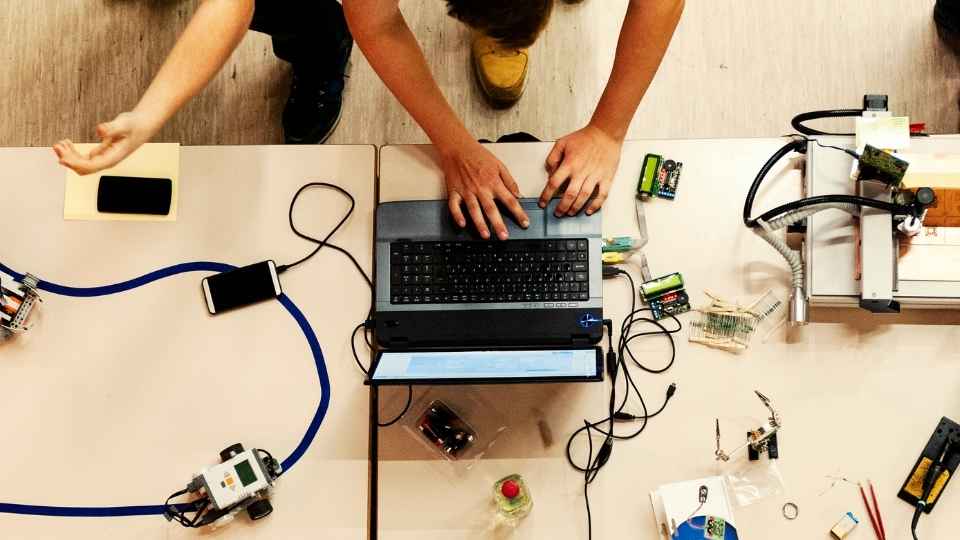
Additionally, the wide range of applications for Arduino makes it versatile for various projects in different industries.
Lastly, the strong community support and abundance of resources ensure that users have access to guidance, tutorials, and libraries to further enhance their projects.
Easy Prototyping Process
Simplifying the prototyping process, the Arduino microcontroller streamlines development for makers of all skill levels. With its user-friendly interface and extensive community support, Arduino provides a platform that empowers individuals to bring their ideas to life.
Here are three reasons why the Arduino microcontroller is the choice of freedom-seeking makers:
Versatility: The Arduino ecosystem offers a wide range of boards and shields, allowing users to seamlessly integrate various sensors and actuators into their projects.
Open-source nature: Arduino's open-source hardware and software provide complete transparency, enabling users to modify and customize their projects freely.
Accessibility: With its affordable price point and beginner-friendly programming language, Arduino makes electronics accessible to anyone interested in tinkering with technology.

Wide Range of Applications
With its extensive range of applications, the Arduino ecosystem empowers users to create innovative projects in various industries. The versatility of the Arduino microcontroller allows it to be utilized in fields such as home automation, robotics, agriculture, healthcare, and education.
In home automation, Arduino can be used to control lighting systems, security systems, and temperature control.
In robotics, it can be employed for building autonomous robots or controlling robotic arms.
For agricultural purposes, Arduino can monitor soil moisture levels and automate irrigation systems.
In healthcare settings, it can assist with patient monitoring and medication management.
Furthermore, in educational environments, Arduino provides a hands-on learning experience for students interested in electronics and programming.
With its wide range of applications across different industries, the Arduino microcontroller truly proves to be the maker's choice for freedom-driven innovation.

Community Support and Resources
Community support and resources play a crucial role in expanding the knowledge and capabilities of users within the Arduino ecosystem. Here are three reasons why community support is essential for those who desire freedom in their projects:
Vast Knowledge Base:
The Arduino community is known for its wealth of information, tutorials, and guides available online. Users can access forums, blogs, and official documentation to find solutions to common problems or gain insights into advanced techniques.
Collaboration Opportunities:
By joining the Arduino community, users can connect with like-minded individuals across the globe who share a passion for electronics and programming. This opens up opportunities for collaboration on projects, sharing ideas, and receiving feedback from experienced makers.
Open-source Libraries:
The Arduino platform boasts an extensive collection of open-source libraries that provide pre-written code to simplify complex tasks. These libraries cover various functionalities, allowing users to focus on their project's unique aspects rather than reinventing the wheel.
With strong community support and abundant resources, Arduino empowers individuals to explore their creativity while benefiting from collective intelligence within a vibrant ecosystem.
The diverse range of applications for the Arduino Microcontroller within the maker community showcases its versatility and adaptability. From robotics and automation to wearable technology and IoT devices, the Arduino has become a go-to platform for makers worldwide.
Its open-source nature allows users to customize and modify it according to their specific needs, providing them with freedom in their creative endeavors. With its easy-to-use software and extensive library of pre-built code, even beginners can quickly learn how to program the Arduino microcontroller.
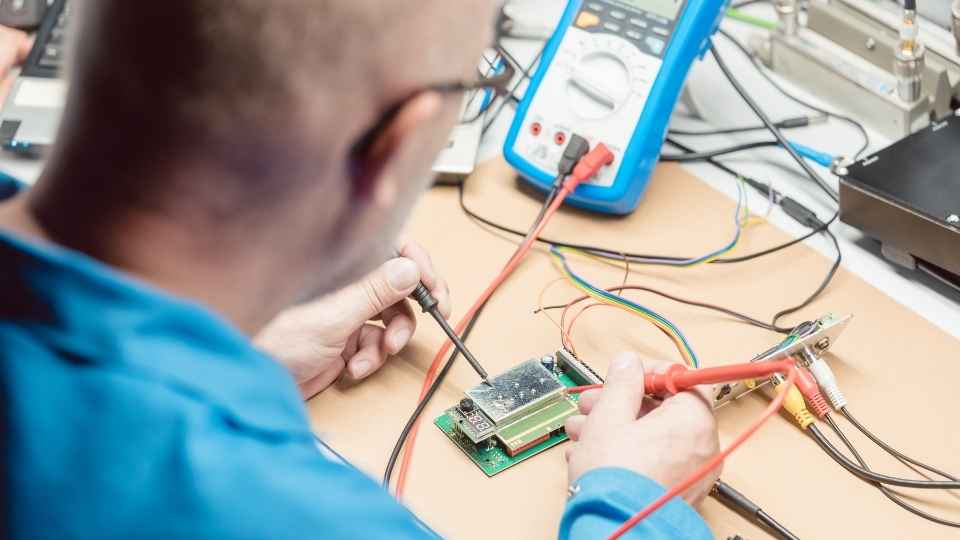
Whether it's controlling lights, motors, or sensors, or creating interactive art installations or home automation systems, the Arduino offers endless possibilities for makers seeking to bring their ideas to life.
Its affordability and accessibility also make it an attractive choice for hobbyists and students looking to explore electronics and programming.
Comparison of Arduino Microcontroller With Other Microcontrollers
A thorough comparison of the Arduino microcontroller with other microcontrollers reveals significant differences in terms of features, programming capabilities, and compatibility with various hardware components. Here are three key differentiators that make Arduino the maker's choice:
Open-source nature: Arduino is an open-source platform, allowing users to freely access and modify its hardware designs and software code. This fosters a vibrant community where makers can collaborate, share ideas, and contribute to ongoing developments.
Beginner-friendly interface: Arduino offers a user-friendly programming environment that simplifies the learning curve for beginners. Its intuitive IDE (Integrated Development Environment) provides an easy-to-understand language based on C/C++, making it accessible even to those with limited coding experience.
Versatility and expandability: Arduino boards come in various models, each designed for specific purposes such as robotics, IoT applications, or wearable technology. Additionally, they support a wide range of sensors, actuators, and shields that can be easily integrated to create customized projects.
Tips and Tricks for Programming Arduino Microcontroller
Now that we have explored the comparison of Arduino Microcontroller with other microcontrollers, let's delve into some tips and tricks for programming the Arduino Microcontroller.
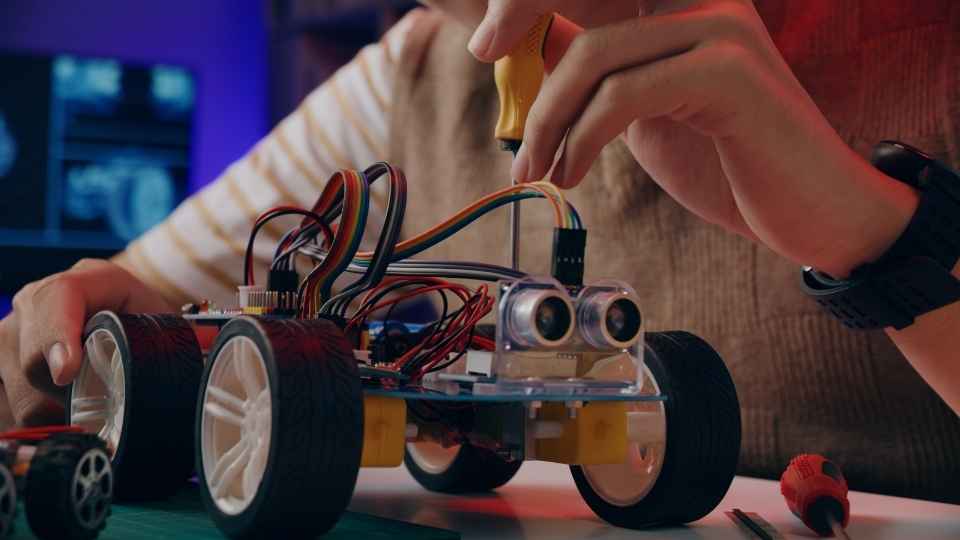
Programming an Arduino requires a solid understanding of the C/C++ language, as well as familiarity with the Arduino IDE (Integrated Development Environment).
One useful tip is to break down your code into smaller functions or modules to make it more manageable and easier to debug.
Additionally, utilizing libraries can save time by providing pre-written functions for common tasks.
Another trick is to use serial communication for debugging purposes, allowing you to monitor variables and program flow in real-time.
Remember to optimize your code by minimizing memory usage and avoiding blocking delays.
Future Innovations and Developments for Arduino Microcontroller
As technology continues to evolve, there are exciting possibilities for future innovations and developments in the world of microcontrollers. The Arduino microcontroller, known for its versatility and ease of use, is likely to see advancements that will further enhance its capabilities. Here are three potential areas where future developments can be expected:
Increased processing power: As demand for more complex projects grows, microcontrollers with higher processing power will become essential. Future iterations of the Arduino may feature faster processors, enabling users to tackle even more advanced projects.
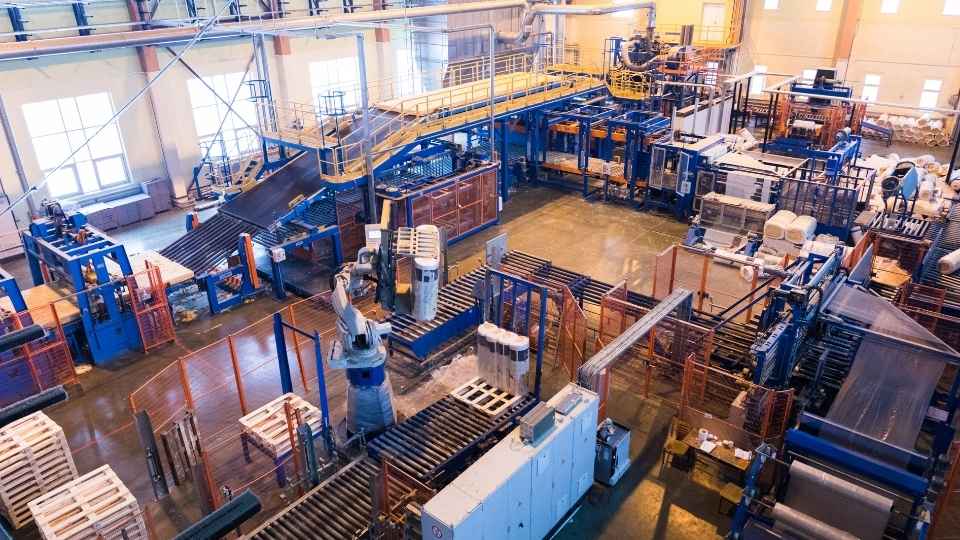
Enhanced connectivity options: With the rise of the Internet of Things (IoT), microcontrollers like Arduino are likely to offer improved connectivity options. This could include built-in Wi-Fi or Bluetooth capabilities, making it easier to integrate Arduino into smart home systems or other IoT applications.
Expanded sensor support: Sensors play a crucial role in many Arduino projects. In the future, we can expect a wider range of supported sensors, allowing makers to explore new possibilities and create innovative solutions in various fields such as environmental monitoring, healthcare, and robotics.
These potential advancements will empower makers with greater freedom and flexibility to bring their ideas to life using the Arduino platform.
Frequently Asked Questions
Can I Use the Arduino Microcontroller for Wireless Communication?
Yes, the Arduino microcontroller can be used for wireless communication. It has built-in capabilities such as Wi-Fi and Bluetooth modules that allow the device to connect and communicate wirelessly with other devices or networks.
How Can I Power My Arduino Microcontroller?
To power an Arduino microcontroller, you can use a USB cable connected to a computer or a power supply with the appropriate voltage and current rating. It is important to ensure the power source meets the requirements of the specific Arduino model being used.
Is It Possible to Connect Multiple Arduino Microcontrollers Together?
Yes, it is possible to connect multiple Arduino microcontrollers together. This allows for expanded functionality and the ability to control and monitor multiple devices simultaneously. Intercommunication can be achieved through various methods such as serial communication or wireless protocols.
Can I Program the Arduino Microcontroller Using Other Programming Languages?
Yes, the Arduino microcontroller can be programmed using other programming languages such as C or C++. This flexibility allows developers to choose the language they are comfortable with and leverage its features for their projects.
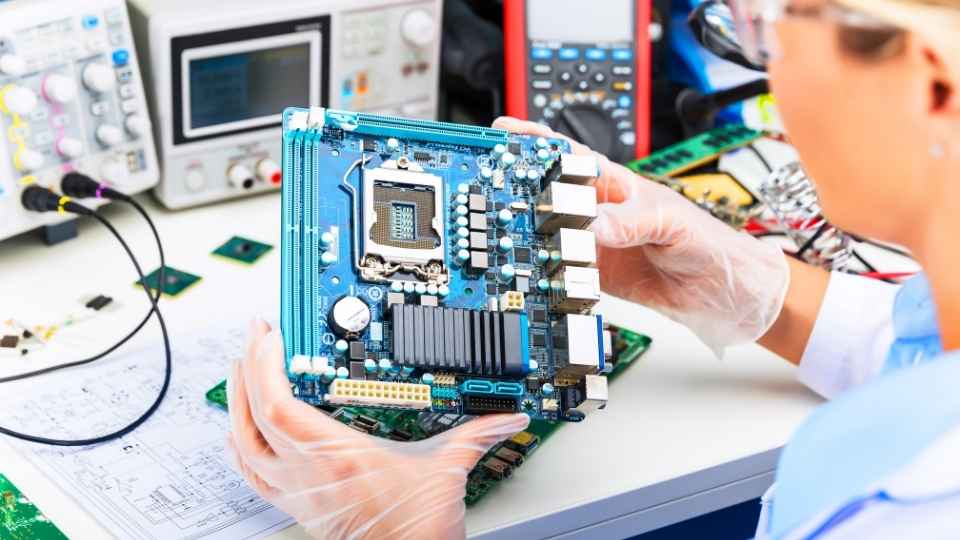
Are There Any Limitations to the Size or Complexity of Projects That Can Be Created With the Arduino Microcontroller?
There are limitations to the size and complexity of projects that can be created with the Arduino microcontroller. These limitations are primarily determined by factors such as memory capacity, processing power, and available input/output pins on the board.
 Basic Electronics ConceptsEssential ToolsCircuit Design BasicsMicrocontrollersDIY Electronics ProjectsRoboticsPrivacy PolicyTerms And Conditions
Basic Electronics ConceptsEssential ToolsCircuit Design BasicsMicrocontrollersDIY Electronics ProjectsRoboticsPrivacy PolicyTerms And Conditions
